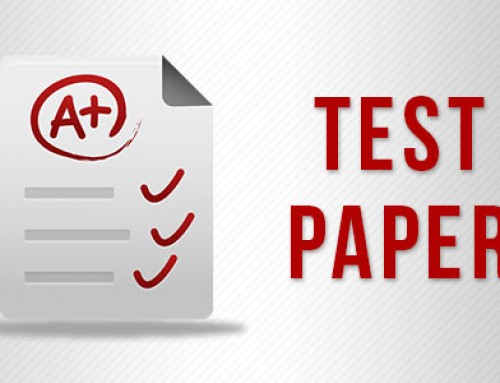Greetings for the day, today we will study topic Probability. Probability, in which we will talk
about chance of happening of an event, chance of happening of any event. Say, everybody
knows about classical definition of Probability. We had studied in 10th the classical definition
that probability of any event is equal to number of favourable cases divided by total number
of sample space. Say, we rolled the dice, these are the six possible sample space which can
happen. Question was asked, probability of getting number divisible by 6, how many sample
space is there totally – 6, how many favourable cases, getting number divisible by 6, how
many numbers are there which is divisible 6? Only 1. So what will be the probability? 1 by 6.
Say, let us take one more question. Dice is rolled, what is probability of getting an even
number? What is the sample space? 6, that is 1, 2, 3, 4, 5, 6, from this 6, any number can
come. How many even numbers are there? 2, 4, 6 – 3 cases are favourable hence the
answer will be half ( ½ ). These are very elementary questions that we people did in 10th
class.
Further moving on we did few questions based on Permutations and combinations in 11th
class and you studied more about conditional probability based theorem, total probability
theorem and binomial distribution in 12th class. Today, we will talk about all these theorems
and the questions based on these, majorly the questions which come in competitive
examination.
Let us start, first question of the assignment, an old man was dialling a 7 digit telephone
number, an old man was dialling a 7 digit telephone number, after dialling the first 5 he
forgets the next 2, but he remembers that both are different. What is the probability of
making a right call? What is the total work, to dial 2 numbers? How many ways are there to
dial first number – 10 ways. After dialling first, how many ways are there to dial next one – 9
because he knows that both numbers are not same. So, how many ways are there for
dialling the two numbers – 90 and how many favourable? So how ways are there for right
calls? Only 1. The correct number only will be dialled. Hence, probability is 1 by 90, answer is
1 by 90. To dial two numbers, how many ways are there? 10 into 9 and in favourable way 1,
so the answer is 1 by 90.
Second question of the assignment. There are 4 apples and 3 oranges. They are arranged
randomly. What is the probability that starting and ending position is occupied by oranges?
Let us consider all the apples different and all oranges different. We have to arrange, total
number of sample space 7 factorials. To arrange 7 things in 7 places, so how many ways — 7
factorials. Number of favourable cases. What do we have to arrange in the starting and
ending – orange? To arrange orange in the start is 3, after arranging orange in the start, so
how many ways are left to arrange orange in the end, 2 ways. After keeping 3, how many
left – 2. Now, after arranging these two oranges, how many fruits are left? 4 apples and 1
orange, to arrange them how many ways are there? There are 5 things which can be kept in
5 ways, after that 4, 3, 2, 1, total, so how many ways are there to arrange these – 6 factorials.
After multiplying all the numbers, you will get the answer as 6 factorials. Number of
favourable is 6 factorial. Hence probability is 6 factorial divided by 7 factorial, that is 1 by 7.
There are 4 apples and 3 oranges, they were arranged randomly, what is the probability that
oranges are at terminals, starting and ending position, oranges are there. Even if you solve
this question considering all apples to be same and all oranges to be same. Then also we will
get same answer, why. Total number of sample space, to arrange 7 things, how many ways –
7 factorials. Why we divided, because 4 apples are same and 3 oranges are also same. So,
how many favourable ways? In the starting 1 orange is kept and in the ending also 1 orange
is kept. So, 1 way and to arrange in 5 space, 5 fruits are left. So, to arrange these fruits, how
many ways are left? 5 factorial divided by 4 factorial is 5. Hence probability is 5 by 35 that is
1 by 7, got it. Starting orange in one way and at ending keep any orange, it is same. So, do it
by thinking oranges and apples are same or different, the answer will be same. But,








